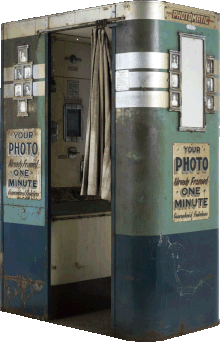This article needs additional citations for verification. (September 2007) |
The International Mutoscope Reel Company was an American amusement arcade company. They were formed in the early 1920s, to produce Mutoscope machines and the motion picture reels that the machines played. They continued to manufacture arcade machines, including the claw machine as well as electro-mechanical games, until 1949.

History
editThe mutoscope is a peep show-style movie viewer that was first manufactured by the American Mutoscope and Biograph company, and is notable for being one of the first means by which motion pictures were exhibited. The company gradually changed its focus to motion picture production and projection, and by the early 1920s, had stopped production of both mutoscopes and the movie reels that were played by the machines.
Rather than allowing the format, still popular in arcades and amusement areas, to disappear, entrepreneur William Rabkin was given permission to continue producing mutoscope reels and machines using the trademarked name. By 1925, he had formed the International Mutoscope Reel Company for the purpose of manufacturing new movie reels to play on both the old mutoscope machines and the new ones that the company started selling. During the golden age of the penny arcade, the company produced a number of amusement machines, including fortune tellers and skill games, and may have been the first to market the claw machine.[1]
Photomatic
editThe company also produced arcade photo booths under the name of "Photomatic". These produced a souvenir 2-5/8" x 3-1/16" metal-framed photo with the credit on the back, "Taken by the Photomatic."
Arcade games
editInternational Mutoscope Reel Company released various electro-mechanical games (EM games) for arcades in the 1940s. In 1941, International Mutoscope Reel Company they released the driving game Drive Mobile, which had an upright arcade cabinet similar to what arcade video games would later use.[2] It was derived from older British driving arcade games from the 1930s. In Drive Mobile, a steering wheel was used to control a model car over a road painted on a metal drum, with the goal being to keep the car centered as the road shifts left and right. Kasco introduced this type of electro-mechanical driving game to Japan in 1958 with Mini Drive, which followed a similar format but had a longer cabinet allowing a longer road.[3]
One of their last arcade EM games was K.O. Champ (1955), a boxing game that used a timer to create a sense of urgency in the gameplay.[4]
Demise
editThe company went out of business in 1949.
William Rabkin, the International Mutoscope founder, died in a fall from the window of his sixth floor apartment in 1956, possibly due to a dizzy spell brought on by high blood pressure.
See also
editReferences
edit- ^ "Pin Game", Time, December 24, 1934,
- ^ Lendino, Jamie (27 September 2020). Attract Mode: The Rise and Fall of Coin-Op Arcade Games. Steel Gear Press. pp. 18–9.
- ^ Smith, Alexander (19 November 2019). They Create Worlds: The Story of the People and Companies That Shaped the Video Game Industry, Vol. I: 1971-1982. CRC Press. pp. 119–20. ISBN 978-0-429-75261-2.
- ^ Williams, Andrew (16 March 2017). History of Digital Games: Developments in Art, Design and Interaction. CRC Press. pp. 20–5, 63–5. ISBN 978-1-317-50381-1.